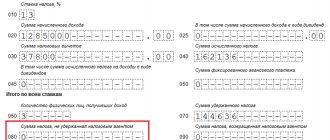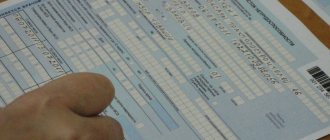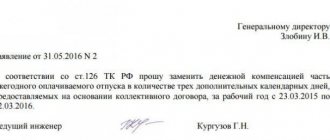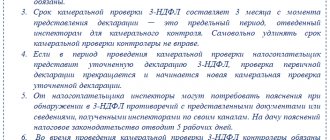An on-site tax audit is a tax control exercise conducted by the Federal Tax Service. During any tax control exercise, an organization's compliance with tax and fee legislation is checked. The subject of control is the calculation and payment of taxes and fees. At the same time, an on-site inspection is a special procedure for checking an organization.
ATTENTION: our tax audit lawyer in Yekaterinburg will help you: professionally, on a profitable basis, and also in the shortest possible time. Make an appointment with a tax lawyer at Katsailidi and Partners Law Firm today!!!
https://youtu.be/O19EG_kHGO4
How to protect yourself from sudden visits from the tax office
First of all, you need to conduct your affairs as transparently as possible. This requires either a skilled accountant or a current account with online accounting functionality. Now almost any bank provides this function for an additional fee. With it, you will not be afraid of a tax audit.
Any non-transparent transactions on an account are suspicious, and the main reaction of banks to suspicious transactions is blocking. Some banks even display an “account blocking danger rating” in the app, which allows you to understand whether you are conducting business transparently enough. When the rating starts to fall, you can simply call the bank and find out what the reason is. Modulbank has such a rating, so we recommend opening a current account there if you are afraid of being blocked.
Opening an account
For free
Service
0 — 4900 RUR
Open account
In addition, we recommend opening several current accounts at once in order to quickly transfer money from one to another if one of them is blocked. It is most convenient to choose banks with free account maintenance so as not to pay monthly fees. You can compare banks by clicking the button below.
List of profitable banks for opening an account
View list
Decision on on-site inspection
The decision to conduct an on-site inspection is the main document giving inspectors the right to carry out this control procedure. It is issued by the Federal Tax Service at the location of the company, place of residence of the individual entrepreneur or individual. When only a separate division of an organization is inspected, the procedure for appointing an on-site tax audit provides for the issuance of a decision on the inspection by the Federal Tax Service at its location (clause 2 of Article 89 of the Tax Code of the Russian Federation).
An on-site inspection cannot be assigned by third-party inspectors, where, for example, only real estate or other property of the taxpayer is registered.
The text of the decision indicates the name (full name) of the person being inspected, the taxes for which the inspection will be carried out, the periods being inspected, and also lists the positions and names of the inspectors conducting the inspection.
What is an on-site tax audit?
Let's start with the fact that tax audits can be divided into two types: desk and field. The first is carried out remotely. Tax officials check the declarations that were previously provided by the taxpayer and additional documents that may be requested during the audit. Moreover, when no violations are found, the taxpayer may not even know about this audit. If violations are nevertheless identified, the tax office can issue a report, or in the worst case, schedule an on-site inspection.
An on-site tax audit is carried out on the territory (premises) of the taxpayer based on the decision of the head or deputy head of the tax authority. In the event that the taxpayer cannot provide premises for conducting an on-site tax audit, an on-site tax audit is carried out at the location of the tax authority.
The main purpose of the audit is to establish whether taxes and insurance premiums were calculated correctly, and whether they were paid on time (clauses 4, 17 of Article 89 of the Tax Code of the Russian Federation). The main document that confirms the start of an on-site tax audit is the decision to conduct it.
There are rumors that the tax office cannot carry out a tax audit in the first 3 years after registration, but this is just speculation by ignorant people. Tax officers are given the right to come with an inspection even the next day after registration. If there is already a decision on the audit, then the tax office conducts an audit for a period not exceeding 3 calendar years preceding the year in which the decision to conduct the audit was made.
At the same time, a taxpayer can be audited no more than once for the same taxes for the same period. Only 1 on-site inspection is allowed per calendar year (with the exception of a decision on a repeat inspection, which is made by the head of a higher tax authority of the Federal Tax Service of the Russian Federation).
Legal regulation of on-site tax audit
According to paragraphs 3, 3.1 of Article 7 of the Law of the Russian Federation of March 21, 1991 No. 943-1 “On the tax authorities of the Russian Federation”, as well as paragraphs. 2 p. 1 art. 31 of the Tax Code of the Russian Federation, tax authorities are given the right to exercise tax control by conducting tax audits; carry out an inspection (survey) of production, warehouse, retail and other premises and territories used by organizations and citizens to generate income or related to the maintenance of taxable objects, in the manner established by the Tax Code of the Russian Federation.
The procedure and rules for conducting inspections are also regulated by the Law of the Russian Federation of March 21, 1991 No. 943-1 “On the tax authorities of the Russian Federation.” The specified normative legal acts do not limit their legal regulation.
Order of the Federal Tax Service of the Russian Federation dated December 25, 2006 No. SAE-3-06/ [email protected] approved the forms of documents used when conducting and processing tax audits; requirements for drawing up a report of a repeated on-site tax audit.
Order of the Ministry of Internal Affairs of Russia No. 495, Federal Tax Service of Russia No. MM-7-2-347 dated June 30, 2009 approved the Procedure for interaction between internal affairs bodies and tax authorities to prevent, detect and suppress tax offenses and crimes.
An on-site tax audit is one of the main forms of ongoing control over compliance with tax legislation and is focused on identifying those violations of tax legislation that cannot always be detected within the framework of a desk tax audit: their identification requires an in-depth study of accounting and tax accounting documents, as well as a number of special control measures. Therefore, the main task of an on-site tax audit is to identify the tax authorities of all elements of taxation and verify the correctness of the determination of the amount of tax by the taxpayer.
Who can a tax audit come to?
Before conducting an on-site inspection of a taxpayer, the tax authority analyzes the company according to 12 criteria:
1. Low tax burden. The tax burden tells how much money an entrepreneur pays to the state. This is the main criterion by which the tax office selects entrepreneurs for inspection.
All taxes include personal income tax. The amount of insurance premiums is not taken into account. The tax authority calculates the tax burden for each industry every year. If the indicator is lower, the company will most likely be included in the inspection plan.
2. Regular losses for 2 or more years. When reports constantly show losses, this is suspicious, according to the tax office. Perhaps the entrepreneur does this on purpose, in order to evade the tax authorities.
3. Tax deduction for VAT above 89%. The share of deductions must be equal to 89% or higher for a period of 12 months of the amount of tax accrued from the tax base. We wrote about VAT and tax deductions here.
4. The growth rate of expenses outpaces the growth rate of income. If a businessman reflects this trend, he may be trying to understate income or inflate expenses in order to avoid paying income taxes










